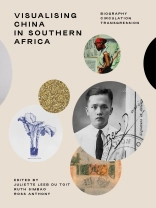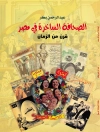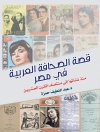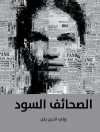China and Africa have long shared a history of allegiance and contact points through global political forces from the time of colonialism and the Cold War. With China’s rise as the new superpower, its presence in Africa has expanded, leading to significant economic, geopolitical and cultural shifts. While issues such as trade, aid and development have received much attention, Chinese and African encounters through the lens of the visual arts and material culture is a neglected field.
Visualising China in Southern Africa: Biography, Circulation, Transgression is a ground-breaking volume that addresses this deficit through engaging with the work of contemporary African and Chinese artists while analysing broader material production that prefigures the current relationship. The essays are wide-ranging in their analysis of ceramics, photography, painting, etching, sculpture, film, performance, postcards, stamps, installations, political posters, cartoons and architecture.
Visualising China in Southern Africa confines its focus to southern Africa, yet even within this region, the context is complex. Ethnicity and nationalism, the lingering influence of Cold War allegiances and colonial configurations all continue to play a role. The various visual cultures discussed in this volume emphasise the commonality of these categories, but also point towards other shared histories that transcend the nation-state category.
The collection includes scholarly chapters, photo essays, interviews, and artists’ personal accounts, organised around four themes: material flows, orientations and transgressions, spatial imaginaries, and biographies. The artists, photographers, filmmakers, curators and collectors in this volume include: Stary Mwaba, Hua Jiming, Anawana Haloba, Gerald Machona, Nobukho Nqaba, Marcus Neustetter, Brett Murray, Diane Victor, William Kentridge, Kristin NG-Yang, Kok Nam, Mark Lewis, the Chinese Camera Club of South Africa, Wu Jing, Henion Han and Shengkai Wu.
विषयसूची
Introduction Geopolitics by Other Means: Navigating the Chinese Presence in Southern Africa through Art – Ross Anthony, Ruth Simbao & Juliette Leeb-du Toit
PART 1 BIOGRAPHY
Chapter 1 A Letter to My Cousin in China: Migrancy and Dilemmas of Burial – Ruth Simbao
Chapter 2 A Chinese Immigrant Collector and the Story of His Stamp Cover – Binjun Hu
Chapter 3 The Chinese Camera Club of South Africa: Landscape and Belonging – Malcolm Corrigall
Chapter 4 Abapakati: Chinese Intermediaries and Artisanal Mining on the Zambian Copperbelt Photo Essay – Stary Mwaba & Ruth Simbao
Chapter 5 Diary of a Diasporic Chinese Artist in South Africa Artist’s Reflection – Kristin NG-Yang
PART 2 CIRCULATION
Chapter 6 Traces of Chinese Trade Ceramics in Southern Africa – Esther Esmyol
Chapter 7 Hidden Objects at the Johannesburg Art Gallery: Han Dynasty Míngqì – Nicola Kritzinger
Chapter 8 Shifting Urbanity and Global China in Conversation: Views from Johannesburg and Lusaka – Mark Lewis & Romain Dittgen
Chapter 9 Tech Transfer: Marcus Neustetter’s China in Africa Corpus – Gemma Rodrigues & Marcus Neustetter
Chapter 10 Moffat Takadiwa: Reincarnating Chinese Commodity Waste in Zimbabwe – Lifang Zhang
PART 3 TRANSGRESSION
Chapter 11 Postcard Representations of Indentured Chinese Labourers in South Africa’s Reconstruction, 1904–1910 – T Tu Huynh
Chapter 12 Seeing and Being Seen: Visualising China and the Chinese People in South Africa – Philip Harrison, Khangelani Moyo & Yan Yang
Chapter 13 Wolf Warrior II: Chinese Film, African Settings and Western Narrative Convergence – Ross Anthony
Chapter 14 The Political Sublime: Reading Kok Nam, Mozambican Photographer, 1939–2012 – Rui Assubuji & Patricia Hayes
Chapter 15 Understanding William Kentridge from China – Ying Cheng & Shuo Wang
Chapter 16 Boiling Frogs: Narratives of Coloniality in South African Art – Juliette Leeb-du Toit
List of Figures
Acknowledgment
Contributors
Index
लेखक के बारे में
Lifang Zhang received a Master’s degree from the Department of Asian and African Languages & Literatures at Peking University, China, as well as a Master’s degree in Art History from Rhodes University, South Africa. She is currently a Ph D candidate in Art History at Rhodes University.












